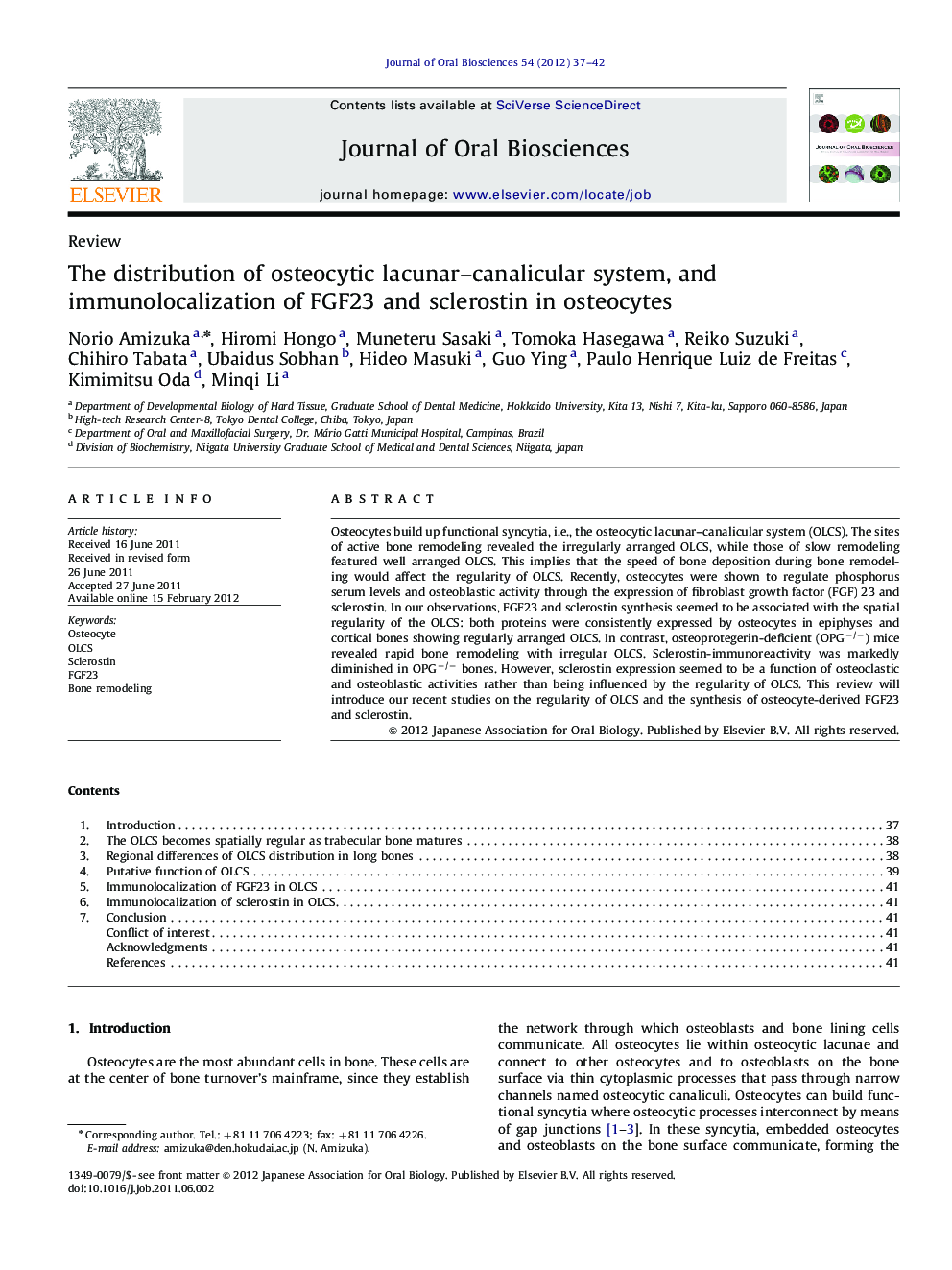| Article ID | Journal | Published Year | Pages | File Type |
|---|---|---|---|---|
| 2776917 | Journal of Oral Biosciences | 2012 | 6 Pages |
Osteocytes build up functional syncytia, i.e., the osteocytic lacunar–canalicular system (OLCS). The sites of active bone remodeling revealed the irregularly arranged OLCS, while those of slow remodeling featured well arranged OLCS. This implies that the speed of bone deposition during bone remodeling would affect the regularity of OLCS. Recently, osteocytes were shown to regulate phosphorus serum levels and osteoblastic activity through the expression of fibroblast growth factor (FGF) 23 and sclerostin. In our observations, FGF23 and sclerostin synthesis seemed to be associated with the spatial regularity of the OLCS: both proteins were consistently expressed by osteocytes in epiphyses and cortical bones showing regularly arranged OLCS. In contrast, osteoprotegerin-deficient (OPG−/−) mice revealed rapid bone remodeling with irregular OLCS. Sclerostin-immunoreactivity was markedly diminished in OPG−/− bones. However, sclerostin expression seemed to be a function of osteoclastic and osteoblastic activities rather than being influenced by the regularity of OLCS. This review will introduce our recent studies on the regularity of OLCS and the synthesis of osteocyte-derived FGF23 and sclerostin.
